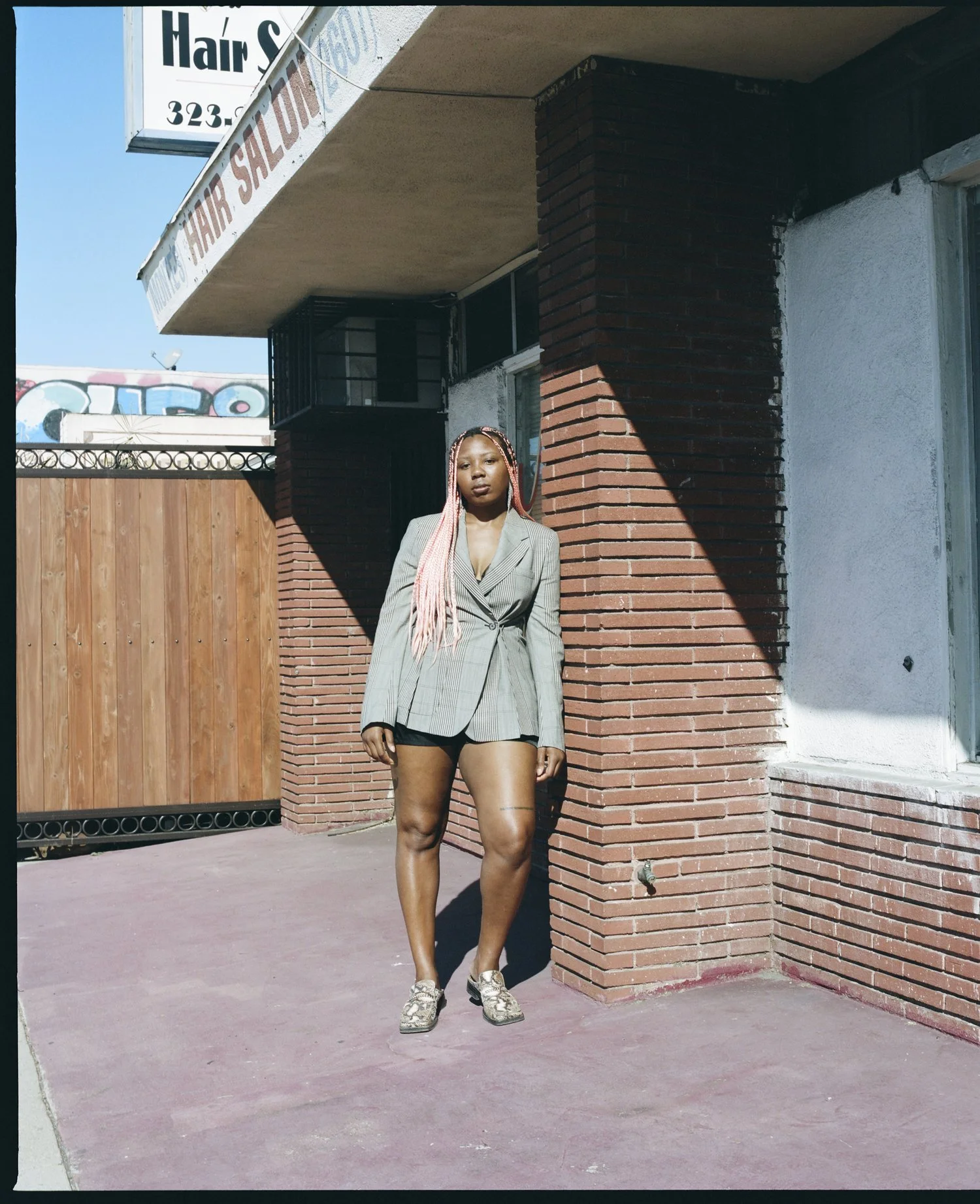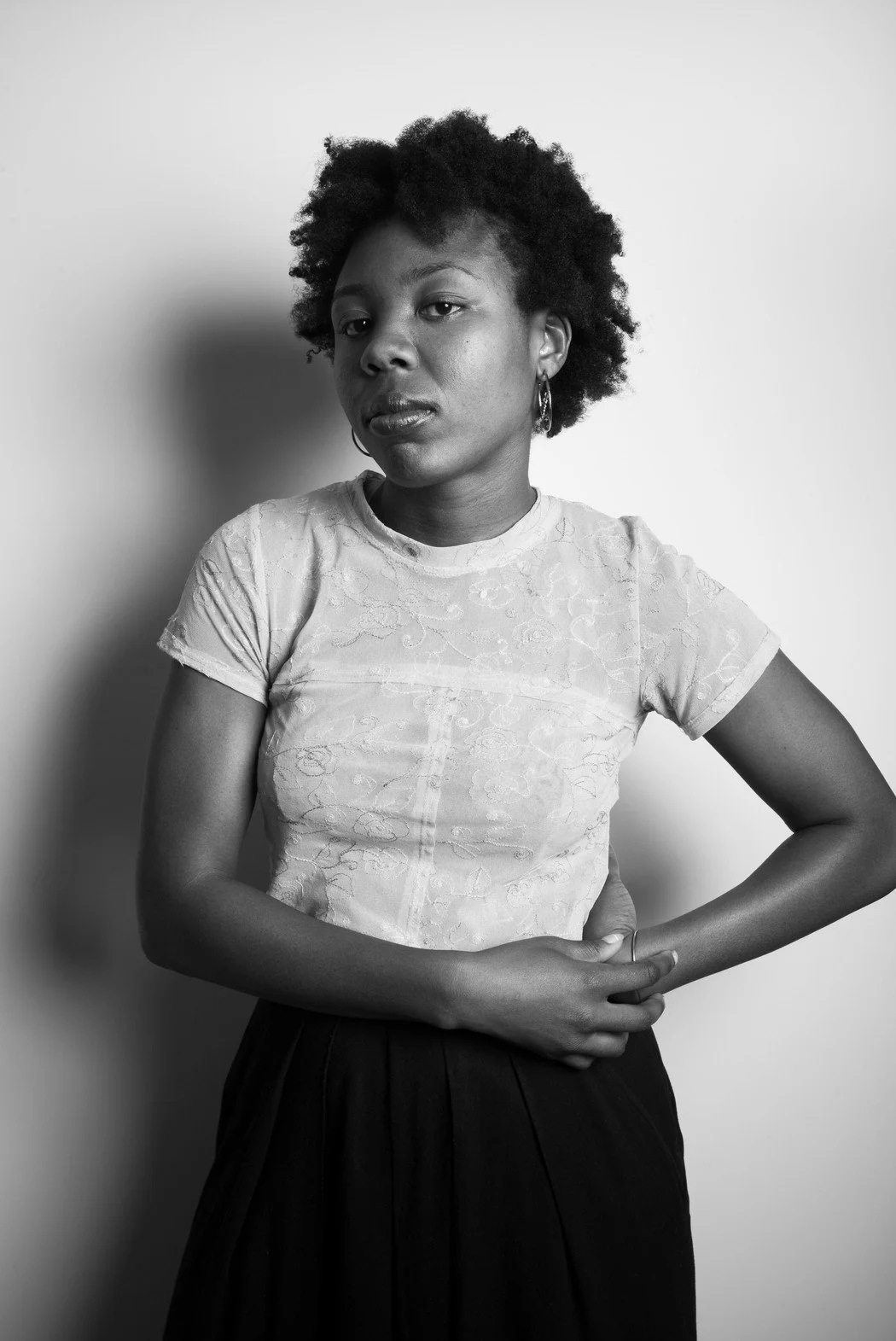Martine Syms on the Difference Between Creating Art and Creating Films About Art
Martine Syms's whip-smart satire The African Desperate is a picaresque for art school cliches that we've come to love and loathe in equal parts. We meet our protagonist Palace Bryant, played by the inimitable Diamond Stingily, in an all too familiar setting: the art critique. In an ordeal that feels as tense as a well-crafted thriller, Palace is interrogated harshly by a panel of white professors on her work while continually, almost compulsively, being reminded that she is one of the hardest-working artists they know.
One particularly villain-esque professor plays devil's advocate asking the singular question Black artists from marginalised genders so often hear - "There are lots of female artists your age and race making the same stuff you're doing; how are you going to differentiate yourself?".
This blatant disregard for Palace's work and the art-jargon-riddled commentary that follows it is a snapshot into the rest of the film that follows her last day of art school - one last blow-out - and the social dynamics at play. Martine's debut feature, co-written by long-time collaborator Rocket Caleshu, is loosely based on her own experience on the MFA programme at Bard College in Upstate New York, where the film is set and filmed.
Martine's decision to take on the 24-hour format for the film gives the audience an intense, concentrated look into the cohort she has spent the last three years with. These characters feel so palpable in their naivety and outwardly liberal demeanour that you could possibly find them (or a British knockoff) misquoting Nietzsche outside Goldsmiths or Central Saint Martins on any given day.
Ahead of the release of The African Desperate, Martine delves into the film with us, speaking on art school, her directorial vision and how her multidisciplinary practice translates on celluloid.
The African Desperate is your first movie - How did your work as a visual artist who works in traditional art spaces and the exhibition format affect how you worked on a feature?
Martine Syms: In many ways, this work is a continuation of my visual art and what's been different is how people interact with it. Most of the time, I'm showcasing these themes through more formal means and through the exhibition space, which you encounter and move through in a different way. I'm very intentional about how you move through one of my shows. I tried to do something similar with the sequencing of the film and how I told the story. I also have a pretty clear sensibility in how I like to edit; I like to think of the cut like a kiss. I love how you can bring any two things together through the edit. It was fun to explore how people would experience my work through character and narrative rather than physical space.
You have worked with video throughout your career, but this is your first feature-length project. How did you conceive the idea for this film?
It came about through a conversation with the lead actor, Diamond. She's an artist as well and a really good friend of mine. We have worked together in the past and have these long phone calls that we often refer to as our podcast. She was talking about the time I was in grad school and shooting Notes on Gestures, which she was a part of. I flew her out for that project, and she told me not to buy her a return, and that's how she moved to New York. Diamond saw me a few times in school after that and was reflecting on how strange those visits were. She said something like, “God, I don't know what I would have done in that programme." And I knew then that was it, that's the movie I wanted to make. As soon as I had the idea, I wrote the first draft. It was like a vomit draft because it all came together quickly.
Is Palace's storyline in the film particularly autobiographical?
The story is a fictionalised version of my last day in school, but Palace is a character that combines the both of us. It's like if Diamond and I were to have a kid or if you could mix us together. My co-writer, Rocket Caleshu, is someone I work with a lot and has been my studio producer for the last six or seven years. Their contribution was massive. Rocket went to grad school at Cal Arts and, like me, has taught art and poetry, which gives us different perspectives of this world and makes the film feel rooted in reality.
Photo: Hedi Slimane
You have all these classic archetypes in the film of people who study Fine Art and inhabit these art spaces. These characters have a different relationship with Palace and elicit different reactions from her. She's warm with her roommate Hannah but much more flippant and dismissive to another classmate, Fern. What made you craft such specific relationships between the characters?
I liked the idea that the audience would learn about Palace through her relationships. How, in some ways, others project upon her and want her to be something for them.
Whether she goes with it or resists, tells you how she feels about that person. I like how showing those different relationships reflect different levels of intimacy. I wanted Fern to be somebody Palace should be friends with on paper. They're interested in the same things and should get along, but for some reason, which maybe happens with people who are mirrors to you, they are repulsive to you. You think, "God, get away from me."
It's interesting you bring up Hannah because that relationship changed quite a bit because of Erin Leland's performance. I thought that friendship would be like the one she shared with her other friends, like Ruby McCollister's character Portia. But she brought a different quality to Hannah that was initially surprising to me, but in the end, it added depth to their friendship.
Speaking of her other friends, all the characters are rich in their personas and have unique eccentricities that make them feel real. Who was the most fun character to write and direct?
We had a lot of fun writing the first scene because we wanted it to encapsulate the tone of the movie. We tried to give everybody at least one really good line that would be instantly quotable. I'm one of those people who likes to quote movies a lot and has these scenes that get stuck in my head. I wanted the film to have that kind of texture to it. There's a lot of dialogue in the movie, which I think makes it feel fun.
The 24-hour format and deciding to capture the last day of school are compelling creative choices. What drew you to make these decisions?
When people make campus films, they often capture the fresh-faced student, followed by a montage and then graduation day is where the movie ends. I wanted to flip that narrative a little. I liked the idea of starting at the very end. I think it was motivated by that anticlimactic feeling I get whenever I accomplish something or reach a major milestone. That feeling of "now what... who am I?".
I wanted to start at the point tonally, to capture the moment of panic when this thing that's been a big part of your life ends and then, for a second, you feel unsettled and don't know what's next. My fondness for the 24-hour format is very arbitrary. I love movies that take place on a day like La Haine and Friday; it's a favourite genre of mine, so I just stuck with that.
Did you find any limitations from this format?
One thing I love about films is how they bend time and space, so this time constraint was really appealing to me. I have a kind of anti-continuity editing philosophy, so when you have limited screen time to capture a day, that's a fun challenge to me imaginatively. With 24 hours, you're forced to be swift in a way, and it cuts out a lot of things. You also don't have to show someone age dramatically; you don't have to think of a million outfits; it keeps it contained.
One limitation, which more people have been asking now that they've seen the film, is that they want to know what happens the next day. I think because you're capturing someone in a snapshot, a lot is left unanswered. But I was interested in that kind of moment of transition. So, yeah, I've gotten a lot of people asking questions or making prophecies about what happens after that day. But we won't ever know.
Words: Zara Afthab
To celebrate the release of Martine Syms’ debut The African Desperate on MUBI, we're inviting Polyester readers to sign up to the site to watch The African Desperate – and all their other films! – with 30 days of MUBI for free.


